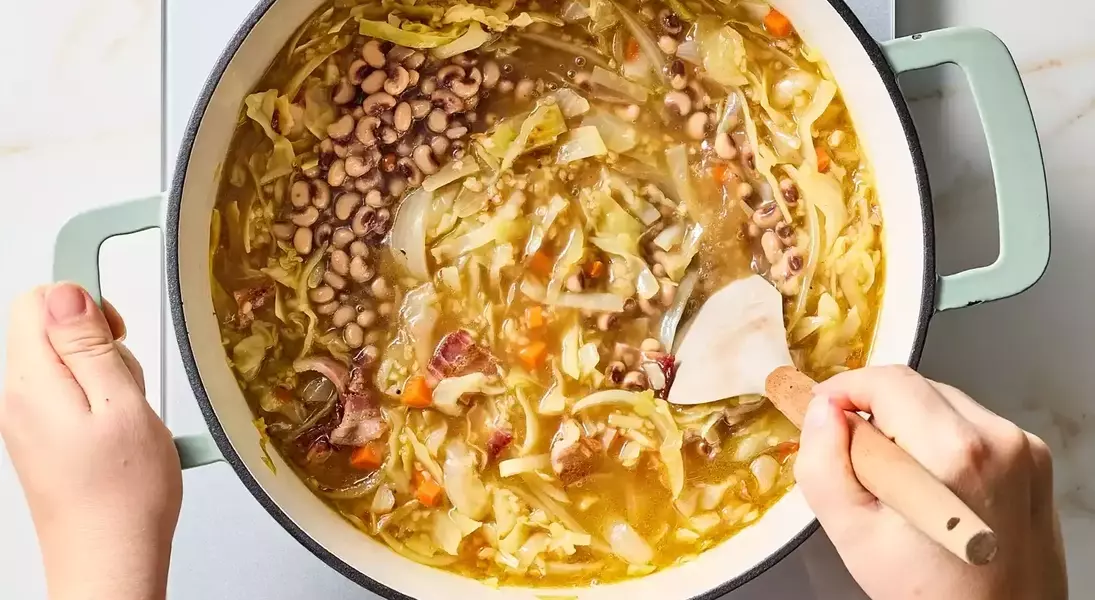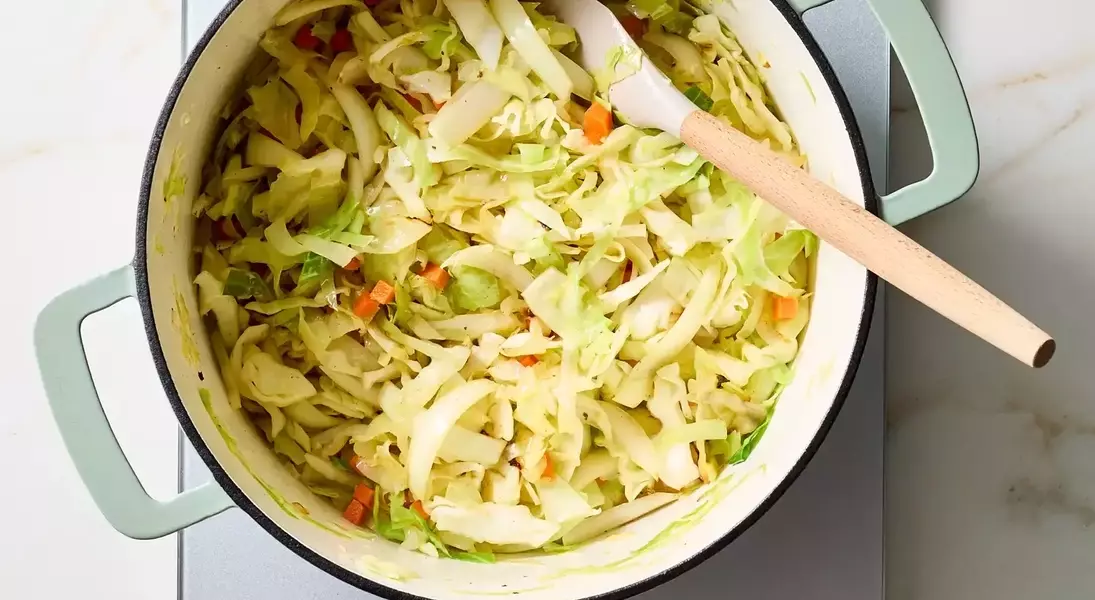







Embrace Tradition: The Soul-Warming Delights of Ukrainian Cabbage Soup
From Diet Culture to Culinary Heritage: The Story of Kapusta
In Western perceptions, cabbage soup often conjures images of restrictive diets. However, within Ukrainian households and across much of Eastern Europe, this dish, known as Kapusta, is a cherished symbol of comfort and tradition. It graces tables during significant celebrations, serving as a flavorful anchor for family gatherings. While childhood memories might involve hesitant spoonfuls, for many, it has transformed into a eagerly anticipated staple.
Unraveling the Name: "Kapusta" and Its Immigrant Roots
The term "Kapusta" itself, meaning simply "cabbage" in Ukrainian, offers a poignant reminder of the dish's humble origins and its connection to immigration. This isn't a recipe found in mainstream culinary tomes but rather in community cookbooks compiled by women's groups and church organizations, often featuring national symbols like the blue trident. These cookbooks, while invaluable, typically provided sparse instructions, necessitating a call to older relatives to fill in the missing culinary wisdom.
Modernizing a Matriarch's Masterpiece: Crafting the New Kapusta
My grandmother's approach to Kapusta, honed over five decades, was an intuitive art, characterized by the phrase "you just taste it." Inspired by her culinary spirit, this recipe aims to demystify her methods. It moves away from her original base of canned beef and bacon soup, instead building a foundation with chicken stock, no-salt-added black-eyed peas, and a hint of tang from sauerkraut. The core remains the same: tender, slow-cooked cabbage, complemented by bacon and a touch of its rendered fat for depth of flavor.
A Symphony of Flavors: The Transformation of Cabbage
For those accustomed to the crispness of coleslaw, the mellow sweetness of slow-cooked cabbage in this soup is a delightful revelation. The combination of chicken stock and black-eyed peas creates a profoundly savory base, while crispy bacon introduces a smoky umami. Each spoonful is finished with a garnish of sauerkraut, adding a refreshing crunch and a hint of acidity, making every bowl deeply satisfying and irresistibly moreish.
Kapusniak: Another Facet of Cabbage Soup Tradition
More recent waves of Ukrainian immigration have introduced another variant: Kapusniak. This version diverges significantly, relying solely on sauerkraut, gently simmered with vegetable stock and onion, then finished with fresh dill. Often described as "zestful" in newer Ukrainian cookbooks, Kapusniak's intense sourness sometimes requires a touch of sugar to balance its vibrant bite. My adapted Kapusta offers a more harmonious flavor profile, though both interpretations are equally hearty and nourishing.
A Culinary Affirmation of Identity: Kapusta's Enduring Legacy
Even amidst Canadian culinary traditions such as barbecued steak, Thanksgiving turkey, Jell-O molds, or pumpkin pie, our family's Kapusta stands as a flavorful testament to our Ukrainian heritage. It serves as a delicious and comforting reminder that, regardless of the main course, our cultural identity remains strong and celebrated through this beloved soup.
Step-by-Step Preparation: Crafting Your Own Kapusta
Begin by crisping bacon in a large Dutch oven over medium-low heat. Once golden, remove the bacon to a paper towel-lined plate and set aside. Preserve the rendered fat, ensuring 2 to 3 tablespoons remain in the pot. Next, add sliced onions, chopped carrots, and thinly sliced cabbage to the pot. Sauté until the onions become translucent and the cabbage softens slightly, a process taking approximately 13 to 15 minutes. Season with salt and pepper, then transfer these cooked vegetables to a large bowl. Return 2 tablespoons of the reserved bacon fat to the pot, discarding any excess. Sprinkle in 2 tablespoons of all-purpose flour and cook, stirring continuously, until it turns a golden, nutty color, which should take about 2 to 3 minutes. Gradually incorporate 1 cup of chicken stock, whisking constantly until fully blended. Continue adding the remaining 7 cups of stock, whisking until the mixture achieves a smooth consistency. Chop the cooled bacon into 1-inch pieces. Add the chopped bacon and sautéed vegetables back into the pot. Stir in ½ cup of bulgur or kasha. Bring the mixture to a boil over medium-high heat, then reduce the heat to maintain a gentle simmer. Cover and let it simmer for approximately 30 minutes, or until the cabbage and bulgur are tender and the broth has slightly thickened. Finally, add the rinsed black-eyed peas and cook until they are just heated through, about 2 to 3 minutes. Serve the soup hot, garnishing each bowl with 2 tablespoons of sauerkraut for an added layer of flavor and texture.
